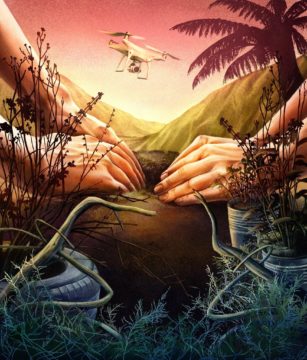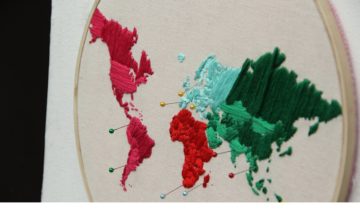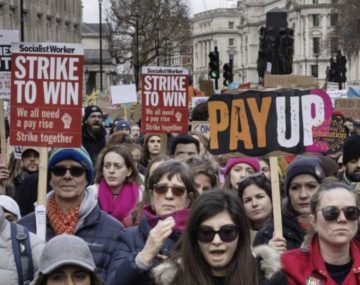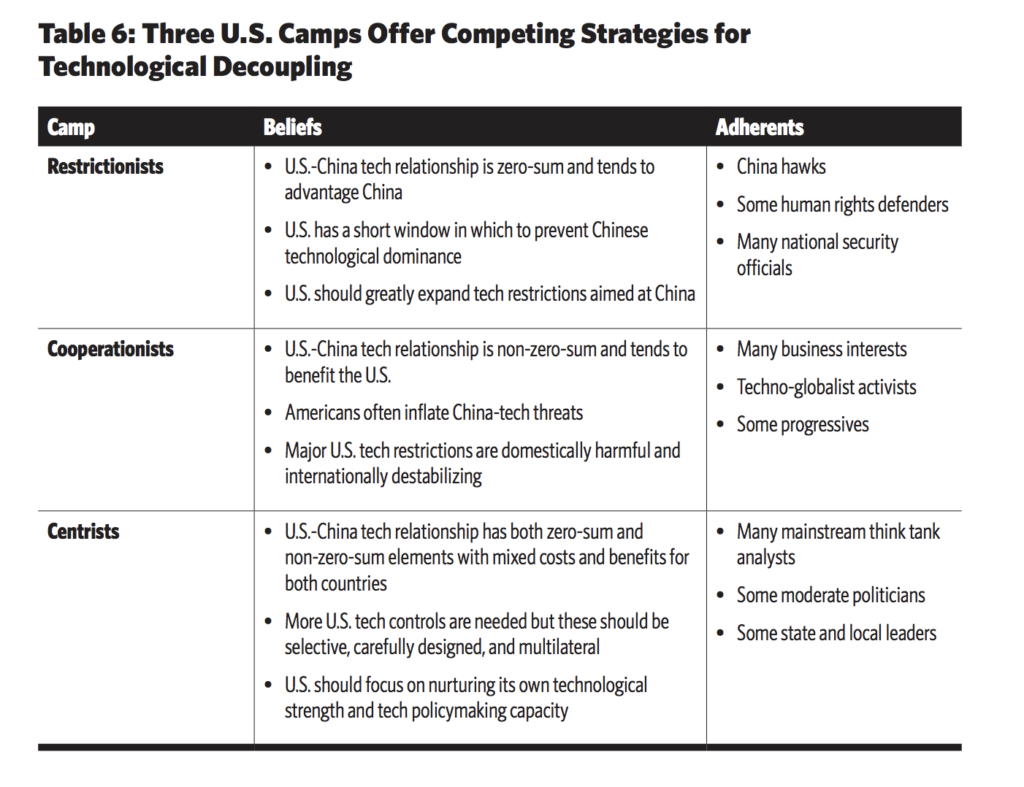Dwight Garner in The New York Times:
 Eleanor Catton’s third novel, “Birnam Wood,” is a big book, a sophisticated page-turner, that does something improbable: It filters anarchist, monkey-wrenching environmental politics, a generational (anti-baby boomer) cri de coeur and a downhill-racing plot through a Stoppardian sense of humor. The result is thrilling. “Birnam Wood” nearly made me laugh with pleasure. The whole thing crackles, like hair drawn through a pocket comb.
Eleanor Catton’s third novel, “Birnam Wood,” is a big book, a sophisticated page-turner, that does something improbable: It filters anarchist, monkey-wrenching environmental politics, a generational (anti-baby boomer) cri de coeur and a downhill-racing plot through a Stoppardian sense of humor. The result is thrilling. “Birnam Wood” nearly made me laugh with pleasure. The whole thing crackles, like hair drawn through a pocket comb.
Catton, who was born in Canada, raised in New Zealand and now lives in Cambridge, England, is a prodigy. She was, at 28, the youngest-ever recipient of the Booker Prize. She won it for “The Luminaries” (2013), a byzantine, dry-witted novel about irascible gold prospectors and unsolved crimes on New Zealand’s South Island in 1866. She is also the author of “The Rehearsal” (2008), a much slimmer novel, about a relationship between a male teacher and a student at an all-girls high school. Catton has felt like the real thing out of the gate. One reason is her way with dialogue. Her characters are almost disastrously candid. They talk the way real people talk, but they’re freer, ruder, funnier. Alongside the wordplay and in-jokes, and the topping of those jokes, unexpected abrasions pile up. You sense the world being thrashed out in front of your eyes.
Another reason is her knowingness — her thinginess. Catton is at home in the physical world, and her details land. (In “Birnam Wood” her scrimping gardeners strew hair-salon clippings as slug repellent.) Her books move sure-footedly, as if on gravel paths, between microclimates.

 During the first century of our era, the Roman philosopher Lucius Annaeus Seneca wrote to his friend Lucilius that life would be much happier if things would only decline as slowly as they grow. Unfortunately, as Seneca noted, “increases are of sluggish growth but the way to ruin is rapid.” We may call this universal rule the Seneca effect. Seneca’s idea that “ruin is rapid” touches something deep in our minds. Ruin, which we may also call “collapse,” is a feature of our world. We experience it with our health, our job, our family, our investments. We know that when ruin comes, it is unpredictable, rapid, destructive, and spectacular. And it seems to be impossible to stop until everything that can be destroyed is destroyed.
During the first century of our era, the Roman philosopher Lucius Annaeus Seneca wrote to his friend Lucilius that life would be much happier if things would only decline as slowly as they grow. Unfortunately, as Seneca noted, “increases are of sluggish growth but the way to ruin is rapid.” We may call this universal rule the Seneca effect. Seneca’s idea that “ruin is rapid” touches something deep in our minds. Ruin, which we may also call “collapse,” is a feature of our world. We experience it with our health, our job, our family, our investments. We know that when ruin comes, it is unpredictable, rapid, destructive, and spectacular. And it seems to be impossible to stop until everything that can be destroyed is destroyed. Whenever I’m feeling uninspired, I think: Somewhere, somebody is doing something right now. You may say this sounds less like a hype mantra and more like the mother of all mediocre movie taglines; you would not be wrong. Nevertheless, this thought is, for me, a surefire poem-generator—lifting me up, up, and away from the well-worn facticity of myself, out into the contemporaneous “Mysteries” of unknown others and their unknown lives.
Whenever I’m feeling uninspired, I think: Somewhere, somebody is doing something right now. You may say this sounds less like a hype mantra and more like the mother of all mediocre movie taglines; you would not be wrong. Nevertheless, this thought is, for me, a surefire poem-generator—lifting me up, up, and away from the well-worn facticity of myself, out into the contemporaneous “Mysteries” of unknown others and their unknown lives. From squabbling over who booked a disaster holiday to differing recollections of a glorious wedding, events from deep in the past can end up being misremembered. But now researchers say even recent memories may contain errors.
From squabbling over who booked a disaster holiday to differing recollections of a glorious wedding, events from deep in the past can end up being misremembered. But now researchers say even recent memories may contain errors. In the US and around the world, people are
In the US and around the world, people are  I remember attending a symposium on space science in Washington, DC, sometime in the 1990s, at which the head of NASA at the time, Dan Goldin, gave a keynote address. He marched up to the podium in his trademark cowboy boots, looked out at the assembled astronomers and physicists in the audience, and asked: “How many biologists are here today?” No hands went up. He then said, “The next time I address this audience, I expect it to be full of biologists!”
I remember attending a symposium on space science in Washington, DC, sometime in the 1990s, at which the head of NASA at the time, Dan Goldin, gave a keynote address. He marched up to the podium in his trademark cowboy boots, looked out at the assembled astronomers and physicists in the audience, and asked: “How many biologists are here today?” No hands went up. He then said, “The next time I address this audience, I expect it to be full of biologists!” We’re supposedly on the brink of an artificial intelligence breakthrough. The bots are already communicating—at least they’re stringing together words and creating images. Some of those images are even kind of cool, especially if you’re into that sophomore dorm room surrealist aesthetic. GPT-3, and, more recently, chatGPT, two tools from OpenAI (which recently
We’re supposedly on the brink of an artificial intelligence breakthrough. The bots are already communicating—at least they’re stringing together words and creating images. Some of those images are even kind of cool, especially if you’re into that sophomore dorm room surrealist aesthetic. GPT-3, and, more recently, chatGPT, two tools from OpenAI (which recently  A small international team of molecular and evolutionary scientists has discovered that male yellow crazy ants (also known as long-legged ants) have two sets of DNA throughout their bodies. In their paper published in the journal Science, the group describes the unique find and discusses possible reasons for it. Daniel Kronauer with The Rockefeller University has published a Perspective piece in the same journal issue discussing the work by the team and suggests that the unique genetic feature of the ants may explain why they are such a successful invasive species.
A small international team of molecular and evolutionary scientists has discovered that male yellow crazy ants (also known as long-legged ants) have two sets of DNA throughout their bodies. In their paper published in the journal Science, the group describes the unique find and discusses possible reasons for it. Daniel Kronauer with The Rockefeller University has published a Perspective piece in the same journal issue discussing the work by the team and suggests that the unique genetic feature of the ants may explain why they are such a successful invasive species. Emily C. Friedman in the LA Review of Books:
Emily C. Friedman in the LA Review of Books: Dylan Riley in Sidecar:
Dylan Riley in Sidecar:
 The effect of Ernaux’s diary is to make this clear: These are the places where life happens, where the social orders are made apparent and reinforced, where societies are “built.” Her local big-box store is the site of ideas, feelings and consequential interactions, where the politics of class, race, gender and privilege get played out — along with more private fantasies and reveries.
The effect of Ernaux’s diary is to make this clear: These are the places where life happens, where the social orders are made apparent and reinforced, where societies are “built.” Her local big-box store is the site of ideas, feelings and consequential interactions, where the politics of class, race, gender and privilege get played out — along with more private fantasies and reveries. Bruno Schulz was a gnomish, cockeyed Polonophone Jew whose writing gave sophisticated expression to the wondrous vagary and uncertainty and foreboding of childhood, without forcing it to — actually, without letting it — grow up. His two volumes of fiction — the sum total of his surviving work save a few scraps that, given Schulz’s focus on youth, one hesitates to call juvenilia — are rife with how small it can feel to be small; they are claustral with the creeping tensions and melancholy of adult domesticity, and slyly attentive to the vulnerability of boredom that can, suddenly, crashingly, turn one’s head to sex.
Bruno Schulz was a gnomish, cockeyed Polonophone Jew whose writing gave sophisticated expression to the wondrous vagary and uncertainty and foreboding of childhood, without forcing it to — actually, without letting it — grow up. His two volumes of fiction — the sum total of his surviving work save a few scraps that, given Schulz’s focus on youth, one hesitates to call juvenilia — are rife with how small it can feel to be small; they are claustral with the creeping tensions and melancholy of adult domesticity, and slyly attentive to the vulnerability of boredom that can, suddenly, crashingly, turn one’s head to sex. A
A Sending threatening text messages to a female colleague. Making fun of another woman by mimicking her on the air. Asking a co-anchor if, perhaps, she was having trouble remembering a statistic in the newscast because she had “mommy brain.” These are just a few of the allegations — many of them captured on camera for the world to see — leveled at CNN anchor Don Lemon in
Sending threatening text messages to a female colleague. Making fun of another woman by mimicking her on the air. Asking a co-anchor if, perhaps, she was having trouble remembering a statistic in the newscast because she had “mommy brain.” These are just a few of the allegations — many of them captured on camera for the world to see — leveled at CNN anchor Don Lemon in